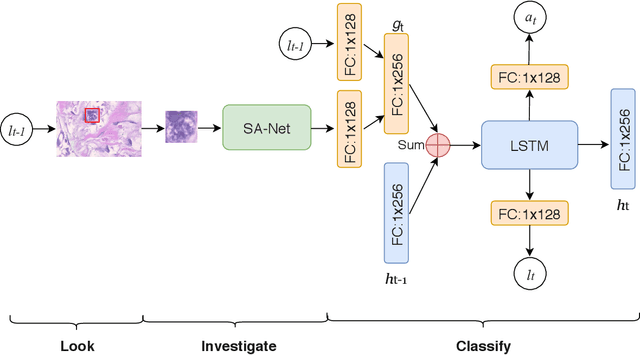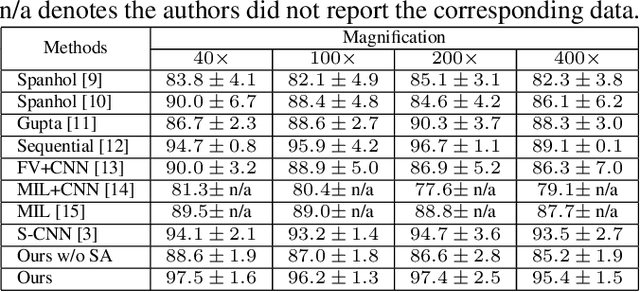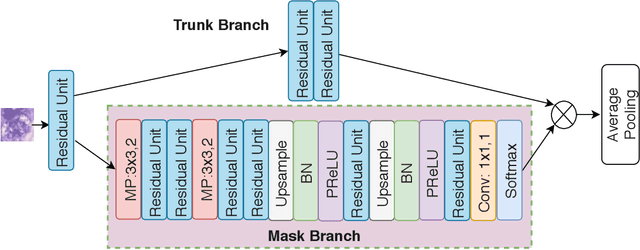Ian O. Ellis
Look, Investigate, and Classify: A Deep Hybrid Attention Method for Breast Cancer Classification
Feb 28, 2019



Abstract:One issue with computer based histopathology image analysis is that the size of the raw image is usually very large. Taking the raw image as input to the deep learning model would be computationally expensive while resizing the raw image to low resolution would incur information loss. In this paper, we present a novel deep hybrid attention approach to breast cancer classification. It first adaptively selects a sequence of coarse regions from the raw image by a hard visual attention algorithm, and then for each such region it is able to investigate the abnormal parts based on a soft-attention mechanism. A recurrent network is then built to make decisions to classify the image region and also to predict the location of the image region to be investigated at the next time step. As the region selection process is non-differentiable, we optimize the whole network through a reinforcement approach to learn an optimal policy to classify the regions. Based on this novel Look, Investigate and Classify approach, we only need to process a fraction of the pixels in the raw image resulting in significant saving in computational resources without sacrificing performances. Our approach is evaluated on a public breast cancer histopathology database, where it demonstrates superior performance to the state-of-the-art deep learning approaches, achieving around 96\% classification accuracy while only 15% of raw pixels are used.
An End-to-End Deep Learning Histochemical Scoring System for Breast Cancer Tissue Microarray
Jan 19, 2018



Abstract:One of the methods for stratifying different molecular classes of breast cancer is the Nottingham Prognostic Index Plus (NPI+) which uses breast cancer relevant biomarkers to stain tumour tissues prepared on tissue microarray (TMA). To determine the molecular class of the tumour, pathologists will have to manually mark the nuclei activity biomarkers through a microscope and use a semi-quantitative assessment method to assign a histochemical score (H-Score) to each TMA core. Manually marking positively stained nuclei is a time consuming, imprecise and subjective process which will lead to inter-observer and intra-observer discrepancies. In this paper, we present an end-to-end deep learning system which directly predicts the H-Score automatically. Our system imitates the pathologists' decision process and uses one fully convolutional network (FCN) to extract all nuclei region (tumour and non-tumour), a second FCN to extract tumour nuclei region, and a multi-column convolutional neural network which takes the outputs of the first two FCNs and the stain intensity description image as input and acts as the high-level decision making mechanism to directly output the H-Score of the input TMA image. To the best of our knowledge, this is the first end-to-end system that takes a TMA image as input and directly outputs a clinical score. We will present experimental results which demonstrate that the H-Scores predicted by our model have very high and statistically significant correlation with experienced pathologists' scores and that the H-Score discrepancy between our algorithm and the pathologists is on par with the inter-subject discrepancy between the pathologists.
 Add to Chrome
Add to Chrome Add to Firefox
Add to Firefox Add to Edge
Add to Edge